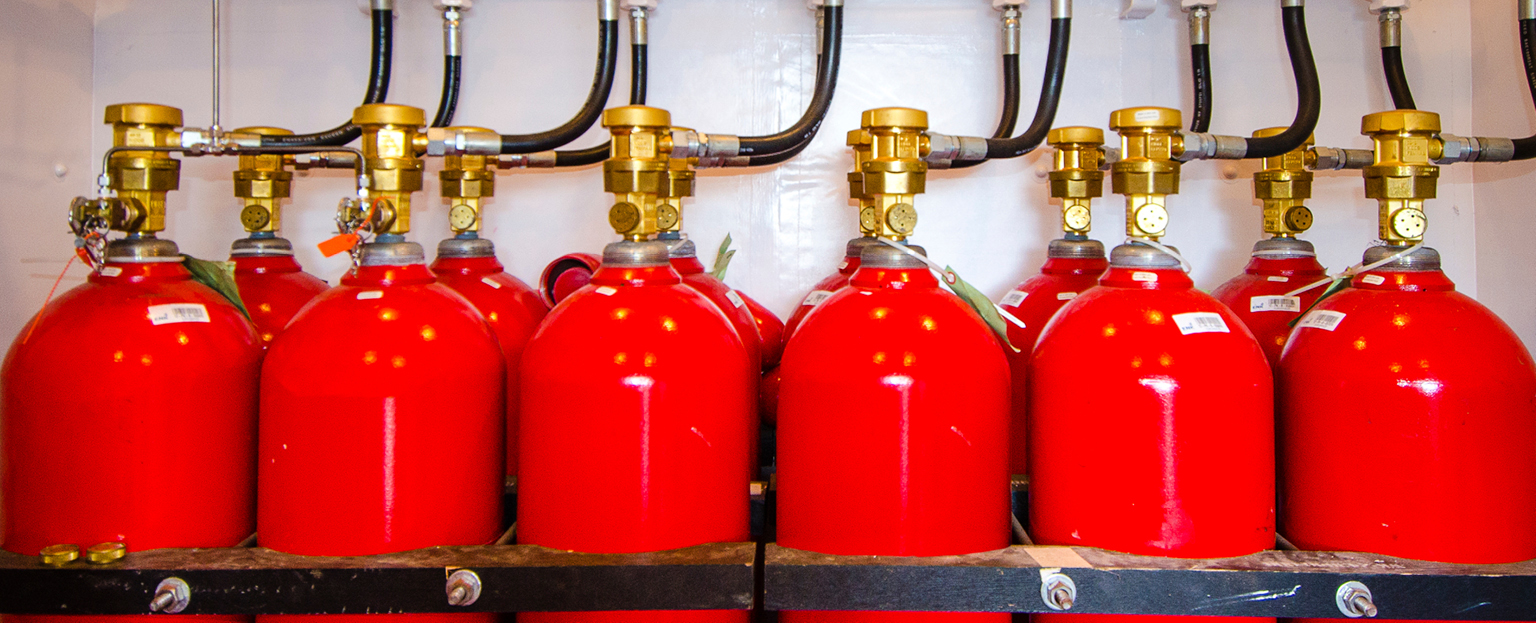From clean agents and CO2 for new installations to the replacement of existing Halon systems, gaseous systems are very effective for machinery spaces and other hazards. Available for total flood applications as well as local applications as appropriate, Hiller offers a full array of gaseous systems to adapt to the unique requirements of protecting life and property at sea.
- Carbon dioxide (CO2) gaseous fire suppression systems, traditionally used for marine applications for fire suppression in machinery spaces and other Class B hazards, can be used on many types of fires – they can flood enclosed areas or be discharged locally onto burning surface fires involving flammable liquids and most solid combustible materials. CO2 is electrically non-conductive and leaves no residue to clean up after discharge.
- Novec 1230 is a gaseous fire suppression system, that is a people-safe clean agent with a smaller footprint than CO2 and a low atmospheric life.
- FM-200 is a gaseous fire suppression system, that is also a people-safe clean agent allowing visibility while leaving no residue and requiring no costly cleanup. It discharges and extinguishes fire quickly and effectively.
- Halon 1301 was an extremely popular gaseous fire suppression agent for decades. Since the determination that it is harmful to the environment in 1987 and its subsequent ban in 1994, Hiller has been at the forefront of designing replacement systems for Halon. By engineering customized fire suppression clean agent systems such as the Novec 1230 and FM200, Hiller creates unique solutions in design and engineering to protect assets and minimize downtime.
- Machinery Spaces
- Flammable Storage Lockers
- Cargo Holds
- Emergency Generator Rooms
- Computer Rooms
